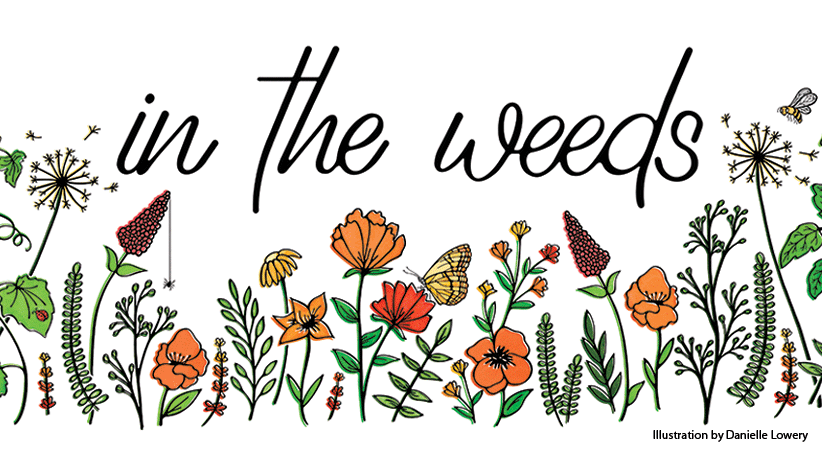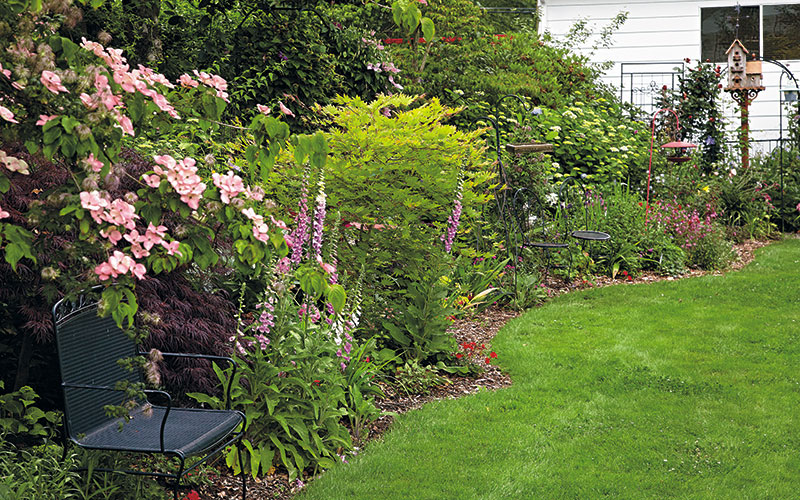
Take these cues to attract more birds
Curious how to attract more birds to your garden? The more your garden resembles a native landscape, the more birds you’ll draw in!
Every bird has foods it likes best but preferences can change depending on the time of year. In spring and summer, most songbirds’ primary food source is insects. In fact, nestlings need insects to thrive and survive — a pair of nesting chickadees has to catch 8,000 caterpillars to raise a brood of chicks!
But during migration, birds look for high-fat seeds and berries to build their reserves for the journey. In many climates insects virtually disappear in winter, meaning winter residents, such as chickadees and Northern cardinals, rely on seeds and berries that remain.
Read on for more surefire ways to attract and care for birds.
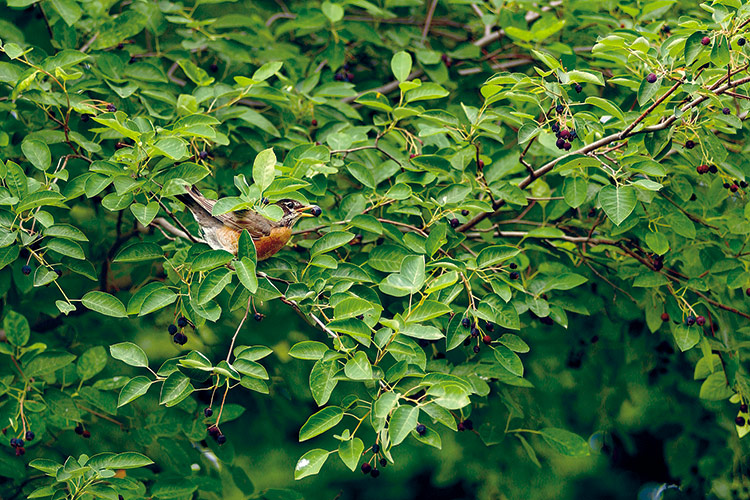
Grow berry-producing plants that birds love
Provide food and shelter for a variety of birds with different preferences by making sure your landscape has everything from tall trees to low-growing ground covers. Plants that have berries are a great addition to your garden.
Attract more birds to your garden by offering food in every season. The serviceberries (Amelanchier laevis) ripen just when hungry American robin fledglings are leaving the nest. Birds often look for colorful berries to eat — red and blue are their favorites. Later in the season plants like flowering crabapples (Malus hybrids) will feed cedar waxwings and Northern cardinals when it’s cold.
Berries for birds
- Serviceberries (Amelanchier laevis)
- Inkberry (Ilex glabra)
- Blueberries (Vaccinium spp.)
- Flowering crabapples (Malus hybrids)
- Holly (Ilex spp. and hybrids)
- Hawthorn (Crataegus spp. and hybrids)
You Might Also Like:
6 Plants Birds Love
How to Make Birdseed Cakes
The Best Kinds of Birdseed for Your Feeders
How to Design a Garden to Attract More Pollinators
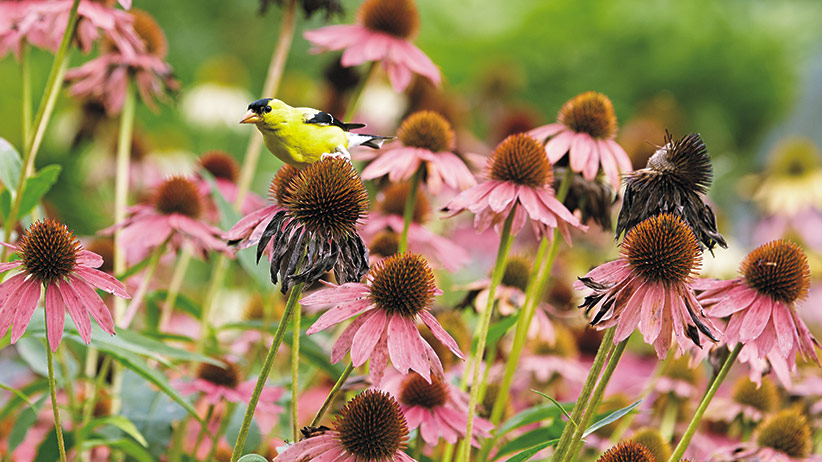
Leave seedheads for the birds
You may be tempted to cut back fading blooms of purple coneflower (Echinacea purpurea) and other plants to tidy up. But waiting until spring gives seed-eating birds, such as the American goldfinch, food when it’s scarce. American goldfinches remain year-round, so leaving seedheads on the plant will keep them coming back to your yard.
Ornamental grasses, like maiden grass (Miscanthus sinensis), offer seeds, as well as nesting material in spring, so leave these standing until new growth starts to emerge.
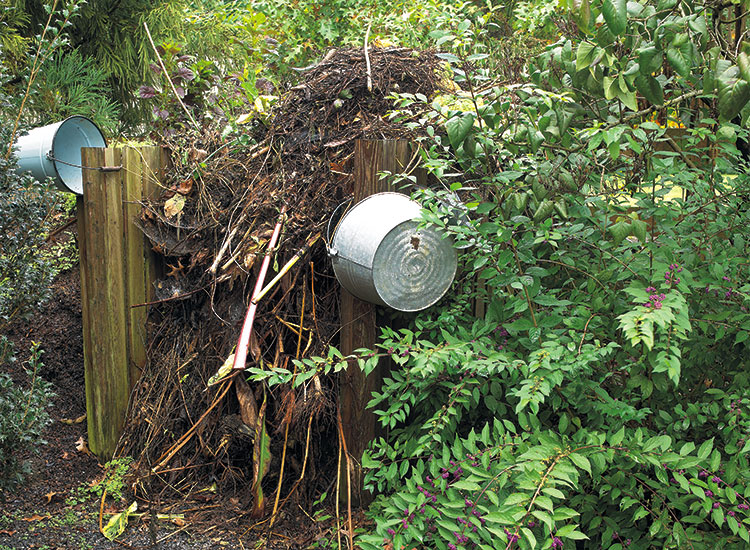
Create a bug haven for the birds
When you rake up debris, gather it into small piles under shrubs rather than sending it away in the trash. This will attract pillbugs, worms and insects that ground-feeding birds, such as brown thrashers, love. And many birds will poke around the lower layers of a compost pile looking for snacks. A pile of garden debris is the perfect spot for a gray catbird to look for beetles, pillbugs or centipedes.
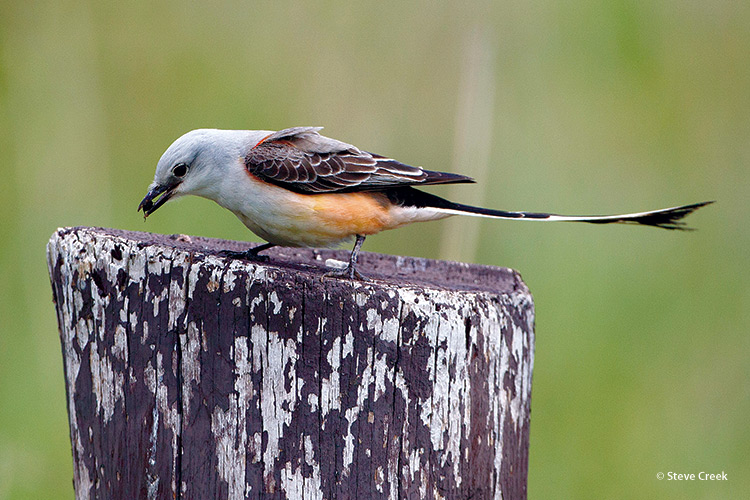
Feed birds in every season
It’s entertaining to watch birds who swoop through the air, scooping up insects in their beaks, such as the scissor-tailed flycatcher. Scissor-tailed flycatchers — found mostly in Texas — use their long tails to help them swoop and make sharp turns as they grab insects in midair. As you watch the birds, you might notice that they have different feeding habits in each season.
While they’re migrating and nesting, usually in spring, nearly all birds eat insects and feed them to their young. Spring is also when many caterpillar and pollinator populations are at their peak. Help birds by providing trees that bloom during this important time.
Some birds, such as bluebirds, American robins and tanagers, enjoy eating high in trees. And in summer, trees’ bark and leaves also harbor adult insects and their young for a summertime feast for woodpeckers and others.
You Might Also Like:
DIY Bird Feeder Wreath
How to Make a Flowerpot Birdbath
DIY Suet Cake Recipes
Plants Guarenteed to Attract Hummingbirds
Avoid pesticides
You don’t want insects to decimate your garden, but if you regularly use pesticides, you’ll kill an important food source for phoebes, bushtits, nuthatches and warblers (and poison the birds that eat insects carrying insecticide). Let birds do most of your pest control, and if you have a bad infestation, spot treat with organic insecticidal soap.










